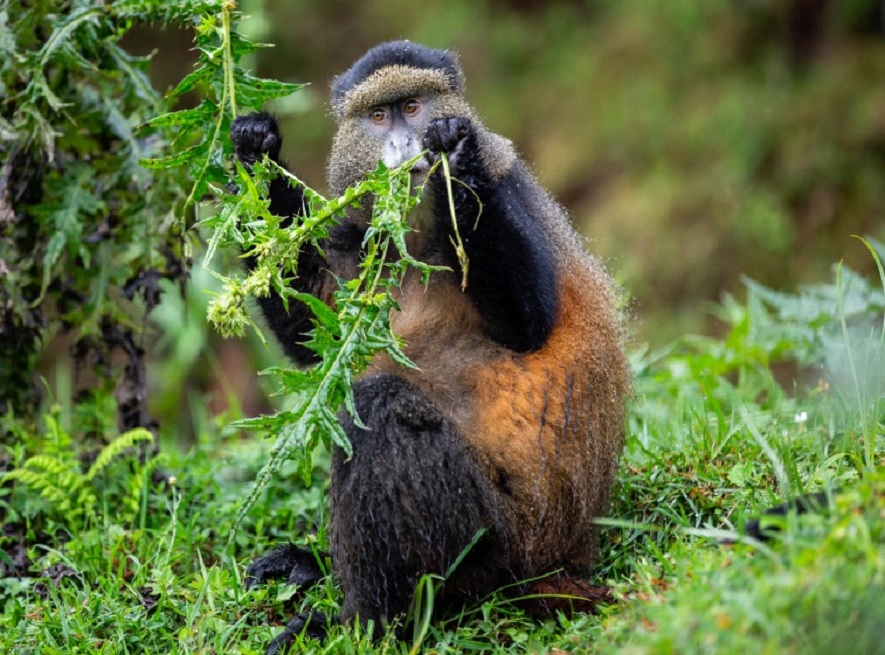6 Facts About Golden Monkeys : Golden monkeys are among the endangered primate species in the world that are found in the Virunga Mountains that are shared by 3 different countries in east Africa. A lot can be done within the Virunga Mountains such as Rwanda gorilla tours, gorilla trekking in mgahinga national park, cultural tours in Rwanda where you get to visit the ibyiwacu cultural village, birding in Rwanda which is done on the different virunga mountains Karisimbi hike, among others. Golden monkey trekking is carried out in mgahinga national park, virunga national park and volcanoes national park.
Below are some facts about the golden monkeys that one needs to know before one embarks on a golden monkey safari.
BEHAVIOR
The golden monkeys within the wild is quiet fascinating when spotted. The golden monkeys are different from the gorillas that sleep in a different nest every night. The golden monkeys can sleep in the same nest they slept in during the night and if they had travelled a long distance they come back to the same place where they slept. These species prefer areas with plenty of fruits and bamboo.
DIET
The golden monkeys are herbivorous primates just like the mountain gorillas and thus eat mainly bamboo trees, shoots, branches as their source of food but can as well feed on flowers and on rare occasions can be seen eating invertebrates like termites, snails among others. When the fruits are readily available the golden monkeys tend to abandon the bamboo and decide to eat the fruits. When both the bamboo and fruits are both available the golden monkeys tend to eat only fruits and it’s still on research why they are much interested in fruits.
SOCIAL STRUCTURE
The golden monkeys are usually found in various different groups of many members and normally an adult male is the dominant member of the group that exercises mating with the different females in the group. The golden monkey group has many females compared to males and in most cases you find 2 to 3 males in a group of females. The dominant male is the overall seer of the group and usually protect the group from harm.
HABITAT
The golden monkeys are only found in the Albertine rift especially within the Virunga Mountains where they can be seen within national parks such as Kahuzi beiga national park which is a home to the eastern lowland gorillas, virunga national park which is known for the nyiragongo mountain hike. You will as well take part in the Congo gorilla tours within the park.
The golden monkeys are highly social creatures that are found in different groups depending on the elevation that is to say the size of the group is dependent on the elevation that they are found in. the golden monkeys love feeding on bamboo as their primary source of food and are distributed where food is found. Therefore the higher the elevation in which they can find food the smaller the group of golden monkeys that can be found.
PHYSICAL STRUCTURE

The golden monkeys have a golden coated fur which makes it strikingly beautiful and this has attracted many tourists in seeing these primates. Besides the golden fur, the females and males can be apart easily with their differences in colour variations where the males have a dark golden and black coating of fur whereas the females have a pale and lighter colour than the males.
REPRODUCTION
A dominant male within the group has all rights to mate with any adult female in the group for purposes of reproduction. When an adult female gets pregnant, the gestation period is 6 months where a young one is given birth with fur on the whole body. These kind of primates have a distinctive season in which they mate in which is another problem when it comes to increasing their numbers because they limit their production which is different among other primates that mate at any time.
Therefore one can have a golden monkey trekking safari within Rwanda, Congo and Uganda in order to know more about the unique primates.